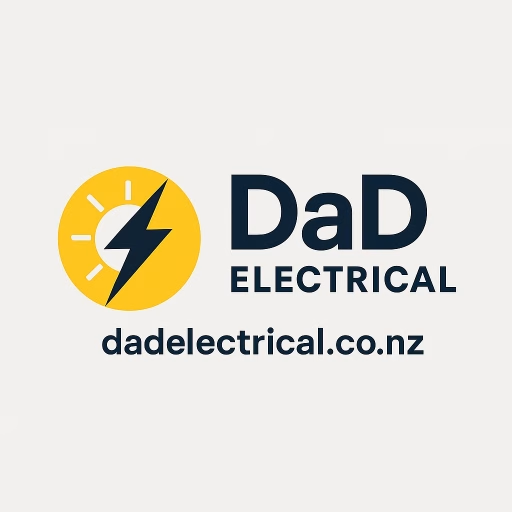If your facility uses electrical medical equipment, you are legally and ethically obligated to ensure it’s safe, maintained, and compliant. That’s where AS/NZS 3551:2012 comes in—a comprehensive standard that defines the management, servicing, and safety testing of medical electrical equipment across Australia and New Zealand.
This standard doesn’t just apply to hospitals. It applies to dental clinics, radiology practices, aged care facilities, day surgeries, and even mobile units. In this article, we’ll explore what AS/NZS 3551 covers, why it matters, and how DaD Electrical can help you meet its rigorous requirements.
What Is AS/NZS 3551?
AS/NZS 3551:2012 – Management Programs for Medical Equipment is the primary standard governing the installation, maintenance, testing, and disposal of medical electrical equipment (MEE) in both public and private healthcare settings.
This standard ensures:
- Patient and staff safety
- Reliability and availability of life-support and diagnostic systems
- Proper documentation for compliance and auditing
- A framework for ongoing servicing and performance checks
It applies to all equipment that meets the definition of Medical Electrical Equipment as per AS/NZS 3200 or IEC 60601 standards.
Who Must Comply?
Facilities and professionals responsible for:
- Patient-connected medical devices
- Clinical engineering teams
- Biomedical engineers
- Contracted service technicians
- Private health practices with diagnostic or treatment equipment
- Electrical workers maintaining MEE
This includes equipment such as:
- ECG machines
- Defibrillators
- Infusion pumps
- Patient monitors
- Dental chairs
- Operating theatre tables and lighting
- Physiotherapy and rehabilitation equipment
Core Components of AS/NZS 3551
Let’s break down the key elements of this standard:
1. Risk-Based Asset Management Program
Clause 2 of AS/NZS 3551 requires facilities to implement a documented management program. This includes:
✅ Asset register with make, model, serial number
✅ Classification of equipment risk (low, medium, high)
✅ Maintenance schedules and service logs
✅ Procedures for fault logging and corrective actions
✅ Decommissioning and disposal processes
The program must be tailored to the risk level and criticality of each device.
2. Routine Inspection and Preventive Maintenance
Clause 6 outlines minimum requirements for preventive maintenance, which must be:
- Scheduled based on manufacturer guidance or local policy
- Performed by competent persons
- Documented using a maintenance history log
Maintenance tasks may include:
- Filter changes
- Lubrication
- Battery replacements
- Mechanical calibration
- Software updates
3. Electrical Safety Testing – Annex E
This is the section most relevant for electricians and test personnel. Electrical safety testing must follow a systematic process:
- Visual inspection: Cables, casings, plug pins, wear and tear
- Earth continuity: ≤ 0.2 ohms
- Insulation resistance: ≥ 1 MΩ
- Leakage current testing: Under normal and single fault conditions
- Functionality checks of all safety-critical systems
Testing must be carried out:
- At commissioning
- At regular intervals (e.g., annually)
- After repair or relocation
Results must be recorded and tagged on the device using PASS/FAIL labels.
4. Competency of Personnel
Only trained and competent personnel can carry out inspections, safety testing, and servicing. This includes:
- Biomedical engineers
- Clinical technologists
- Electrical service technicians with MEE experience
Personnel must demonstrate:
- Knowledge of the relevant electrical and safety standards
- Familiarity with medical equipment operation
- Use of calibrated test instruments
5. Calibration of Test Equipment
Clause 6.4 mandates that test equipment itself must be traceably calibrated, typically once per year, to ensure the validity of electrical safety tests. No calibration = no valid test.
How AS/NZS 3551 Links to AS/NZS 3003
While AS/NZS 3003 deals with the fixed electrical installation in patient areas, AS/NZS 3551 covers the equipment connected to it.
For example:
- AS/NZS 3003 ensures an IPS system and RCDs are correctly installed.
- AS/NZS 3551 ensures the medical ventilator or ECG machine plugged into that outlet is safe to use and tested regularly.
They work hand-in-hand to ensure complete electrical safety in medical environments.
Non-Compliance Risks
Failure to comply can result in:
❌ Patient injury or death
❌ Equipment failure during procedures
❌ Breaches of HDC Code and HSWA (Health and Safety at Work Act)
❌ MOH and DHB penalties or service shutdowns
❌ Insurance voidance in event of incident
How DaD Electrical Supports AS/NZS 3551 Compliance
We’re more than just electricians—we’re medical safety specialists.
Our services include:
- Electrical safety testing (Annex E)
- Tagging and logging of MEE devices
- Asset register support
- Service tagging and CoC documentation
- Decommissioning and compliance audits
We also coordinate with biomedical engineers to ensure all equipment is fully compliant before recommissioning.
Final Thoughts: Safety Is Not Optional
AS/NZS 3551 provides a structured and mandatory approach to managing medical equipment across all healthcare environments. Whether you’re running a rural GP clinic or a private surgical suite, this standard ensures your equipment is safe, maintained, and legally compliant.
Need help meeting AS/NZS 3551? Contact DaD Electrical today for dependable, qualified service you can trust.
